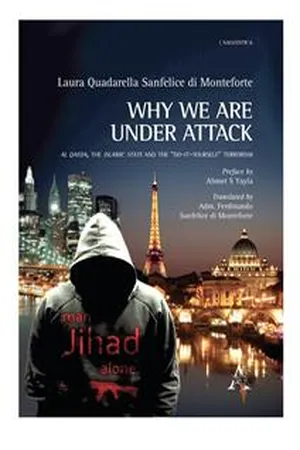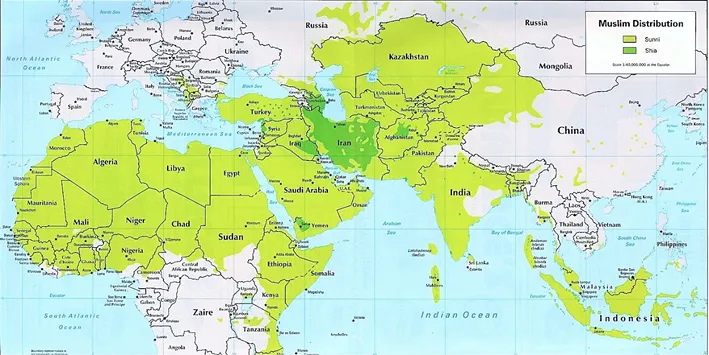
Why we are under attack
Al Qaeda, the Islamic State and the "do-it-yourself" terrorism
- English
- ePUB (mobile friendly)
- Available on iOS & Android
Why we are under attack
Al Qaeda, the Islamic State and the "do-it-yourself" terrorism
About this book
The "do-it-yourself" terrorism in an analysis, supported by a rich photographic documentation, ranging from jihadist propaganda to the attacks carried out in the West by homegrown terrorists and foreign fighters-returnees. These youngsters respond to the calls by Al Qaeda and the Islamic State, competing for the leadership in the jihadist galaxy, and attack us, seldom acting in total autonomy. From the study of the attacks and of the material broadcasted on the net, it is possible to understand which attacks are directed and coordinated by jihadist groups, and which are simply inspired by their ideals. It is therefore possible to answer questions as the one giving the name to this book and to speculate on "who, when and where will attack us", as well as to see first–hand the jihadist propaganda, through hundreds of colour photographs.
A study which, in addition to the explanation on the "where, when and how" of terrorism, helps to understand "why"! (Giuseppe Cucchi, General, former Head of DIS – Italian Security Intelligence Department). I highly recommend this book, as it fills an important gap in Western knowledge of jihadism. To know what the adversarial propaganda says is a way to prevent and contain its effects, and this is especially true in the case of DIY terrorism (Ferdinando Sanfelice di Monteforte, Professor of Strategic Studies, former Commander of NATO Naval Forces Southern Europe and anti-terrorism Operation ACTIVE ENDEAVOUR). A clear analysis, based on scientific data and methodology, of a complex phenomenon.
A book for everybody, that can be easily read, studied, and that definitely helps us understand why they are attacking us (Fabrizio Luciolli, President of the Atlantic Treaty Association). A central theme of this in-depth analysis is that the West is on the periphery of the conflict, a conflict which is internal to what the author calls 'the jihadist galaxy'. We are not central to this conflict but are being used by it and for it (Ajit Maan, Ph.D., President of Narrative Strategies). Every law enforcement official, policy maker and ordinary citizen who wants to understand the "why" of terrorism must read this essential, insightful and well researched book (Carlos Vazquez, Ph.D., Senior Consultant in Terrorist Recruitment at the Behavioral Analysis Group). This book deeply explores the vicious cycle of different ideologically driven insurgency groups in the world. A must study!!! (David Otto Endeley, TGS Counter Terrorism & Organised Crime Expert UK/EU/Africa). This essential and up-to-date analysis helps us make sense of the most recent trends in terrorism, like the 'do-it-yourself' variety (Paul Cobaugh, Vice-President, Narrative Strategies). More than just a modern Sun Tzu compilation on terrorism, this book offers a comprehensive view on the western homegrown terrorism in all its dimension: cultural, popular and media. A useful overview of the new youngster generation! (Gérald Arboit, Senior Researcher in the French Centre on Intelligence Research). I would strongly recommend this book to get an insight view to part of our new world order (Arne Gerrit Halvorsen, Associate Editor of Defence and Intelligence Norway).
Frequently asked questions
- Essential is ideal for learners and professionals who enjoy exploring a wide range of subjects. Access the Essential Library with 800,000+ trusted titles and best-sellers across business, personal growth, and the humanities. Includes unlimited reading time and Standard Read Aloud voice.
- Complete: Perfect for advanced learners and researchers needing full, unrestricted access. Unlock 1.4M+ books across hundreds of subjects, including academic and specialized titles. The Complete Plan also includes advanced features like Premium Read Aloud and Research Assistant.
Please note we cannot support devices running on iOS 13 and Android 7 or earlier. Learn more about using the app.
Information
OF JIHADIST TERRORISM




Table of contents
- Cover
- Dedication
- List of acronyms of the principal jihadist groups mentioned
- Preface
- Introduction
- 1. The present phenomenon of jihadist terrorism
- 2. The “do-it-yourself” terrorism
- 3. A Case Study: the Brussels Attacks
- 4. Possible future developments
- Chronological list of the most important attacks mentioned
- Bibliography